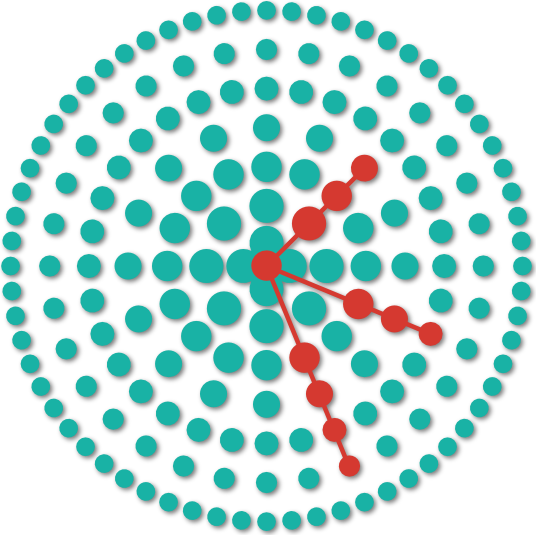Observation of Pineal Tumors


When it comes to managing pineal tumors, sometimes the best approach is to watch and wait. Observation, or “watchful waiting,” can be a safe and effective strategy, especially for certain types of tumors that aren’t causing symptoms or showing signs of growth.
But how do doctors decide when observation is the right choice? In this guide, we’ll explore who makes the best candidates for monitoring, the risks and benefits of delaying treatment, and what a typical follow-up schedule looks like.
Whether you’re considering observation or just curious, this approach offers valuable insight into a less invasive way to manage pineal tumors.
When Will Observation be Recommended?
Observation is typically considered when pineal tumors are small, asymptomatic, and believed to be benign. The decision to observe rather than treat is based on a thorough evaluation of the tumor's characteristics, such as its size, growth rate, and appearance on imaging studies like MRI.
Factors predictive of malignancy, such as contrast enhancement on MRI and hemorrhage within the tumor, may prompt a more aggressive treatment approach. Observation may also be preferred if the treatment risks outweigh any potential benefit, such as in an elderly patient or patients with other medical issues that may complicate therapy.
Patient preference is a primary consideration in deciding between treatment versus observation. It is important to discuss the decision for observation with your physician to better understand potential risks and benefits.
Who Are the Best Candidates for Observing Pineal Tumors?
The ideal candidates for observation are typically those with small, asymptomatic tumors that are suspected to be benign, as well as patients who are older or have serious health problems.
Why should you have your surgery with Dr. Cohen?
Dr. Cohen
- 7,500+ specialized surgeries performed by your chosen surgeon
- More personalized care
- Extensive experience = higher success rate and quicker recovery times
Major Health Centers
- No control over choosing the surgeon caring for you
- One-size-fits-all care
- Less specialization
For more reasons, please click here.
Patients with Asymptomatic and Small Tumors
Some patients may have small tumors that are not causing any symptoms. Observation is often recommended for patients with pineocytomas, as these are slow-growing tumors.
In this case, patients will receive regular imaging with MRI to measure the size and progression of their tumor. For patients with more aggressive or faster-growing pineal tumors, treatment may be recommended over observation.
Older Patients and Patients with Comorbidities
Older patients or patients with comorbidities, such as cardiovascular disease and uncontrolled diabetes, may be recommended observation first. Advanced age and other health concerns are associated with a higher risk of complications for many treatments, including surgery and radiation.
Therefore, the risks may outweigh the benefits for some of these patients. However, if the pineal tumor begins to cause symptoms, then the healthcare team may recommend more active treatment.
Benefits of Observing Pineal Tumors
Avoid Risks of Treatment
Any brain surgery carries inherent risks such as infection, bleeding, and general anesthesia complications. Other treatments, such as chemotherapy and radiation, also come with risks such as radiation necrosis, cognitive decline, secondary malignancies, and drug side effects.
Observation helps patients avoid these complications, especially when surgery is not deemed urgent or needed at the time.
Maximize Quality of Life
With many treatments having side effects and associated risks, observation can maintain a patient’s quality of life by foregoing these consequences until treatment is deemed appropriate by the physician and patient. In the case of surgery, some patients may develop swelling of their brain, infection, and seizures.
Changes in cognitive function and personality may also occur. These risks highlight the importance of discussing risks versus benefits when treating a pineal tumor.
Risks of Observing Pineal Tumors
Potential Tumor Growth and Progression
Pineal tumors may grow over time, even if they are initially slow growing. As the tumor grows, it can cause symptoms, such as headaches, nausea, and vision changes, or due to obstruction of cerebrospinal fluid flow, leading to hydrocephalus.
Tumor growth can also lead to new neurological deficits, including Parinaud's syndrome, which is characterized by being unable to look up or down and is commonly associated with pineal region tumors. While rare, there is a risk that a benign tumor could transform into a more aggressive, malignant form, which could complicate future treatment and worsen prognosis.
Anxiety and Uncertainty
Living with the knowledge of an untreated brain tumor can cause significant anxiety and stress for patients, which can affect their overall quality of life. The stress and uncertainty of living with an untreated tumor can make it challenging for patients to make clear decisions about their care and future. The patient's family may also experience anxiety and stress, which can affect family dynamics and the patient's support system.
Follow-Up Frequency for Observing Pineal Tumors
Follow-up frequency is tailored to the individual patient and the specifics of their tumor. Typically, an initial follow-up MRI is performed within 3 to 6 months after the initial diagnosis.
If the tumor remains stable, subsequent MRIs may be scheduled every 6 to 12 months. Adjustments to the follow-up schedule are made based on any changes in the tumor's size or the patient's symptoms.
While the thought of living with a pineal tumor can be daunting, it's reassuring to know that not all tumors require immediate surgical intervention. With careful monitoring and the support of a dedicated medical team, many patients can maintain their quality of life and avoid the potential risks of surgery.
Open communication with your healthcare team is essential to address any concerns and to understand the rationale behind the observation strategy.
Key Takeaways
- Observation is typically recommended for small, asymptomatic pineal tumors and patients at higher risk for treatment-associated complications.
- Observation can avoid immediate risks associated with surgery, radiation, and chemotherapy.
- Observation may benefit patients by allowing them to maintain their quality of life.
- Risks of observation include progression of a patient’s disease and anxiety of waiting for treatment.
- Regular follow up is important for patients undergoing observation of their tumor, and it is essential to monitor for any growth of their tumor that might indicate the need for treatment.











